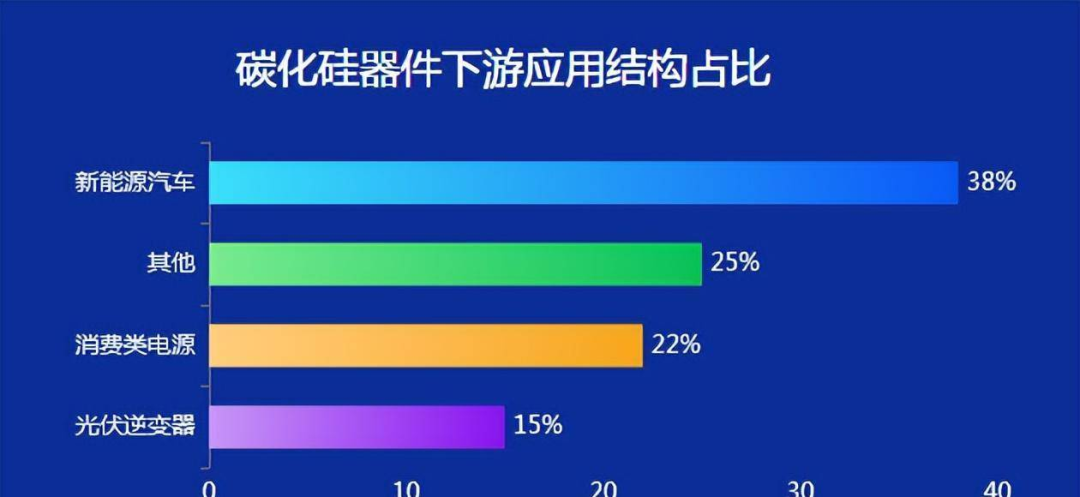Part I: In-depth application of silicon carbide (SiC) power devices in new energy vehicles
Silicon carbide has excellent electrical properties such as high voltage resistance, high temperature resistance, high frequency, and radiation resistance. It breaks through the physical limitations of silicon-based semiconductor materials and becomes the core material of the third-generation semiconductor. The performance advantages of silicon carbide materials lead to new changes in power devices.
The function of power devices is to realize the processing, conversion and control of electrical energy. Compared with silicon-based power devices, power devices made of silicon carbide substrate have the advantages of high voltage resistance, high temperature resistance, low energy loss, and high power density, which can realize the miniaturization and lightweight of power modules. Compared with silicon-based MOSFETs, the size of silicon carbide-based MOSFETs of the same specifications can be greatly reduced to 1/10 of the original, and the on-resistance can be reduced to at least 1/100 of the original. The total energy loss of silicon carbide-based MOSFETs of the same specifications can be greatly reduced by 70% compared with silicon-based IGBTs.
Silicon carbide devices are used in vehicle charging systems and power conversion systems, which can effectively reduce switching losses, increase the maximum operating temperature, and improve system efficiency. Currently, more than 20 automobile manufacturers around the world use silicon carbide power devices in vehicle charging systems; silicon carbide devices are used in new energy vehicle charging piles, which can reduce the volume of charging piles and increase charging speed. The application of SiC in new energy vehicles will greatly reduce the weight of the vehicle while ensuring the strength and safety performance of the vehicle, effectively increase the cruising range of electric vehicles by more than 10%, and reduce the volume of the electronic control system by 80%.
The market space for silicon carbide used in DC fast charging piles is expected to increase significantly in the future. Due to cost reasons, the current proportion of silicon carbide devices used in DC charging piles is still relatively low. However, by configuring silicon carbide power devices, DC fast charging piles can greatly simplify internal circuits, improve charging efficiency, reduce the volume and cost of radiators, and reduce the overall size and weight of the system. With the application of 800V fast charging technology, the silicon carbide market for DC charging piles is expected to grow rapidly.
With the rapid development of technologies such as electric vehicles and smart driving, the automotive industry's demand for semiconductor power devices is growing. The third generation of semiconductor power devices, such as silicon carbide (SiC) and gallium nitride (GaN) devices, have gradually become the new favorite of the automotive industry due to their excellent performance such as high efficiency, high frequency and high temperature.
1. Characteristics of the third-generation semiconductor power devices Compared with traditional silicon (Si) semiconductor materials, third-generation semiconductor materials such as SiC and GaN have many advantages:
Higher energy efficiency: The third-generation semiconductor power devices have lower on-resistance and higher switching speed, thereby achieving higher energy efficiency and reducing energy consumption.
Higher operating frequency: Due to the higher electron saturation velocity and lower input capacitance of the third-generation semiconductor materials, their operating frequency can reach tens of megahertz or even higher, far exceeding traditional silicon semiconductors.
Higher temperature stability: The third-generation semiconductor materials have higher thermal conductivity and wider bandgap width, enabling them to work stably at higher temperatures.
Smaller size: Due to the high frequency characteristics of the third-generation semiconductor power devices, the size of magnetic components and capacitors can be reduced, thereby achieving a more compact power supply design.
Combining the above advantages, at the same power level, the number of power devices in the equipment, the volume of the heat sink, and the volume of the filter components can be greatly reduced, and the efficiency is also greatly improved.
The emergence of silicon carbide can alleviate the balance between the weight and durability of electric vehicles to a certain extent. In the power control unit, silicon carbide devices can make the battery lighter, longer, and stronger. Silicon carbide devices can shorten charging time. With the increase in the penetration rate of new energy vehicles, the application and status of silicon carbide in electronic vehicles are getting higher and higher. The automobile industry is an important pillar industry of the national economy and plays an important role in the national economy and social development.
With the continued rapid development of my country's economy and the accelerated advancement of urbanization, the demand for automobiles will continue to grow for a long period of time in the future, and with the increase in the penetration rate of new energy vehicles, the application and status of silicon carbide in electronic vehicles are getting higher and higher.
Similar to the pursuit of higher-performance processors for mid-to-high-end mobile phones, silicon carbide can not only improve the energy conversion efficiency of new energy vehicles, but also increase the overall cost of the car, but the higher price will cover this part of the cost. Therefore, in order to obtain more industry profits, mid-to-high-end cars of various manufacturers will also be equipped with silicon carbide equipment one after another.


Due to the characteristics of silicon carbide (SiC) materials, SiC MOSFET, as a third-generation wide-bandgap power semiconductor, has obvious advantages over the second-generation power semiconductor based on Si materials. It has greatly reduced losses in on-resistance and switching, and is suitable for higher operating frequencies. In addition, due to its high-temperature operating characteristics, it greatly improves high-temperature stability. As shown in the figure (comparison between SiC and Si)
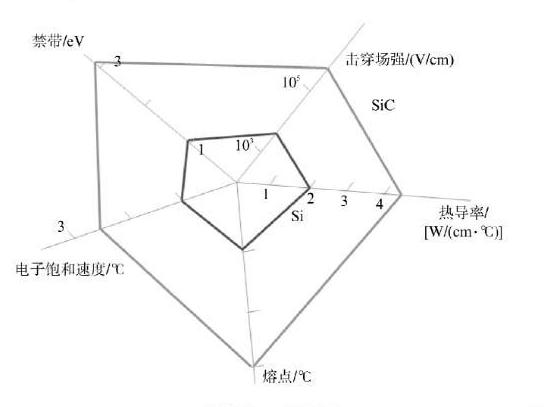
However, Sic-MOSFET also has its shortcomings. In actual application, it can achieve faster switching speed and higher efficiency, but its fast switching speed places high demands on the design of the drive circuit, especially the stray inductance of the entire system, which will cause greater EMC impact at fast switching speeds.
Similarly, Sic-MOSFET still faces great challenges in terms of electrical performance. Due to its faster response capability, current and voltage oscillations are prone to occur.
The following figure shows the switching current and voltage oscillation curves of the SiCMOSFET module, where (a) is the turn-on current oscillation, (b) is the turn-off voltage oscillation, and (c) is the diode oscillation voltage, with a peak controlled to 856V. It can be clearly seen from these three figures that the electrical oscillation of SiCMOSFET at the switching moment is much more serious than that of IGBT. These characteristics pose great challenges to automotive-grade applications and EMC.
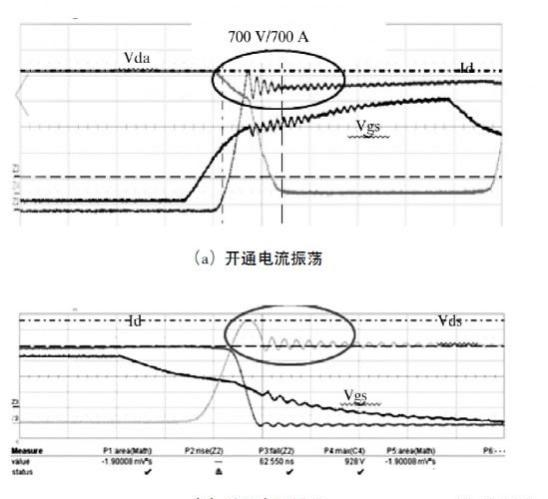
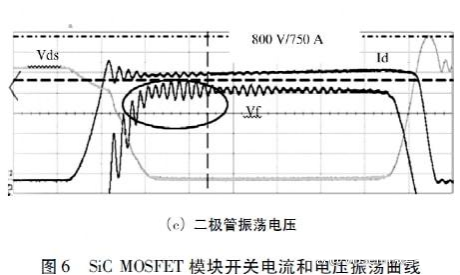
Silicon carbide (SiC), also known as corundum, is a semiconductor raw material for third-generation compounds. Driven by the development of the new energy market industry, the efficient utilization and transformation of energy has driven the rapid development of the silicon carbide (SiC) industry market.
2. Development of the silicon carbide (SiC) industry market: China's silicon carbide (SiC) power device applications in new energy vehicles account for the largest proportion, reaching 38%. Through visual chart analysis, we can intuitively understand the cost structure of silicon carbide (SiC). From the perspective of its manufacturing cost structure, the substrate cost accounts for the largest proportion, followed by the proportion of epitaxy costs. It can be found that these two major processes are the main links in the development of the industry, and their preparation is very difficult, and the technology and cost are also very high.
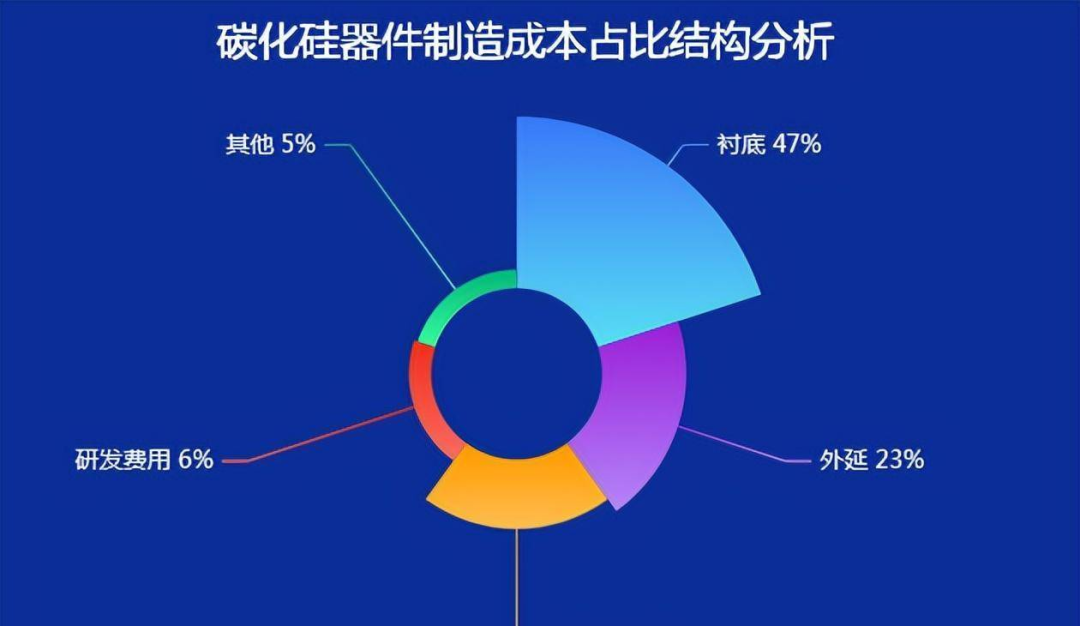
Silicon carbide (SiC) substrate is a semiconductor single crystal raw material composed of carbon (C) and silicon (Si), which can be divided into two types: conductive and semi-insulating. The following shows the development trend of the global silicon carbide (SiC) substrate market size based on network data. From the analysis of the chart, it shows a rapid growth trend.
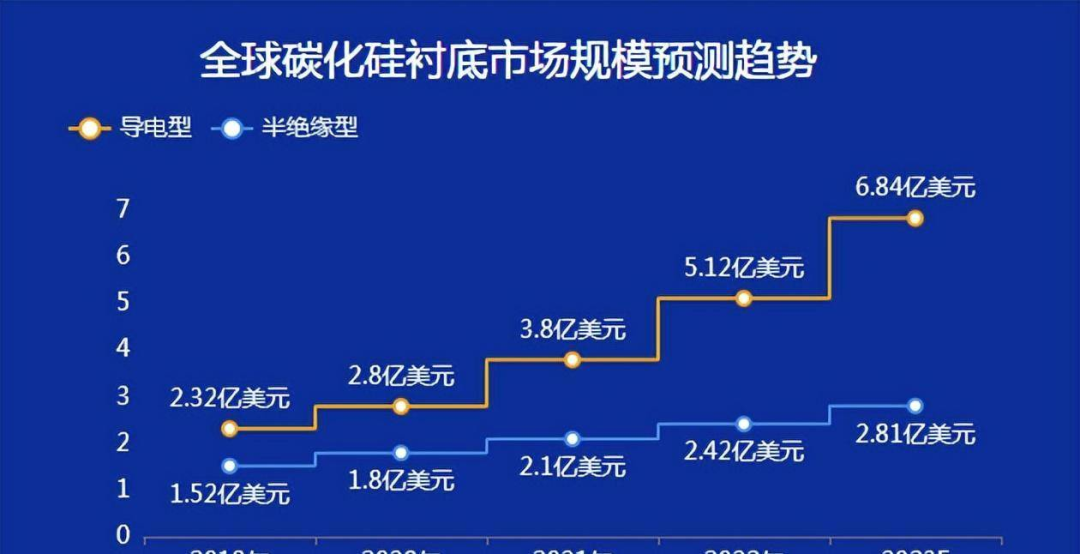
After analyzing the situation of silicon carbide (SiC) substrates, let's analyze from another perspective, silicon carbide (SiC) epitaxial wafers, what is its price trend?
Silicon carbide (SiC) epitaxial wafers refer to silicon carbide (SiC) wafers on which a single crystal thin film (epitaxial layer) with certain requirements and the same crystal as the substrate is grown on the silicon carbide (SiC) substrate. From the perspective of price analysis, silicon carbide (SiC) epitaxial wafers are still very expensive. However, with the decline in the price of silicon carbide (SiC) substrates, the price of silicon carbide (SiC) epitaxial wafers will also tend to decline in the future.
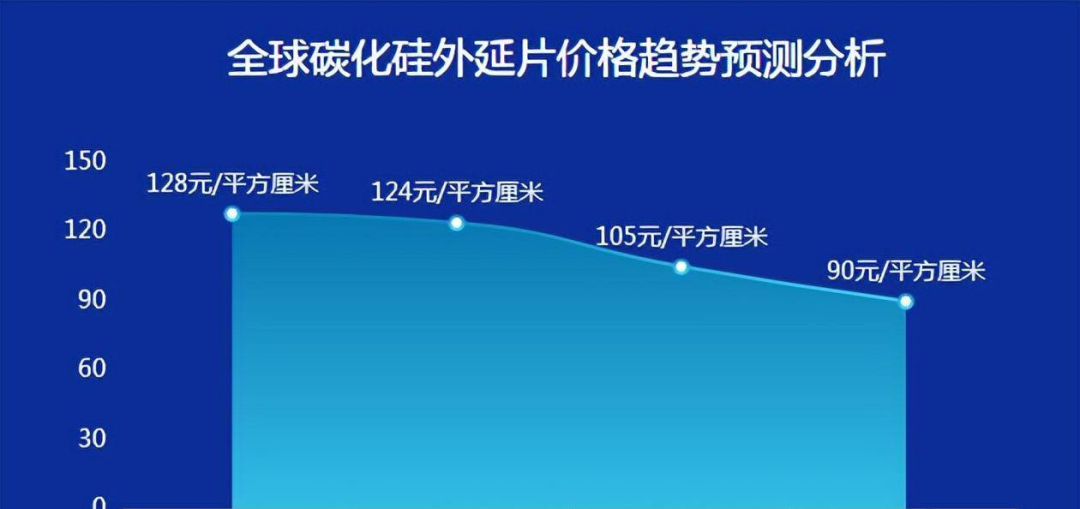
In addition, let's analyze the market size of silicon carbide (SiC) power devices. The biggest features of silicon carbide (SiC) power devices are high voltage, high frequency, low consumption, etc., which are its unique advantages. It can maximize the energy conversion efficiency. With technological breakthroughs and cost reduction, silicon carbide (SiC) power devices will be widely used in different fields such as new energy electric vehicles and charging piles. According to the analysis of network data, the growth trend is also quite rapid.

With the continuous development of the silicon carbide (SiC) industry, the market scale of silicon carbide (SiC) power devices and the market competition pattern of power devices have also changed. However, it is still mainly guided by overseas giants. As we can see through the visual analysis below, STMicroelectronics accounts for a large proportion, exceeding 40%.
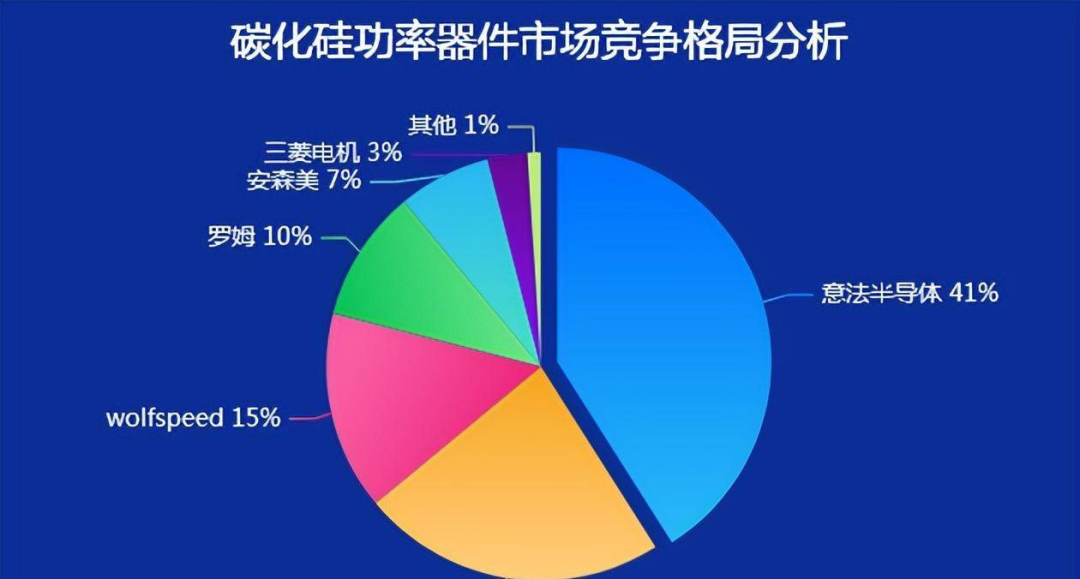
At present, the application scale of silicon carbide (SiC) in my country is also growing continuously. From the analysis, with the development of new energy industry and the development of new and different fields such as charging piles, the application of silicon carbide (SiC) power devices in my country has been driven.
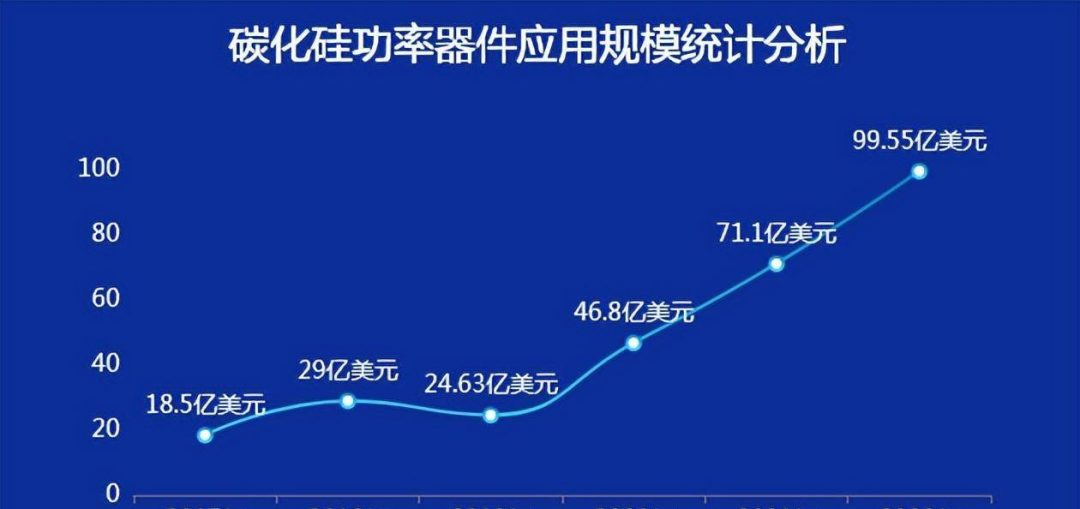
From the current application structure analysis, my country's silicon carbide (SiC) power devices still dominate in new energy vehicles and consumer power supplies.
